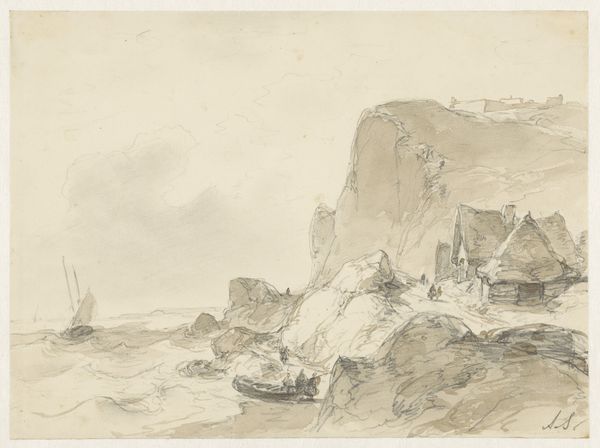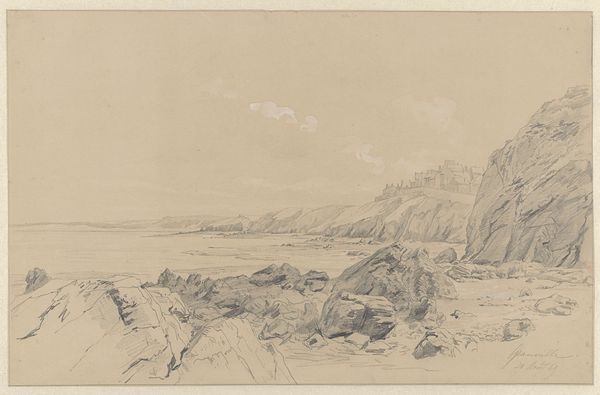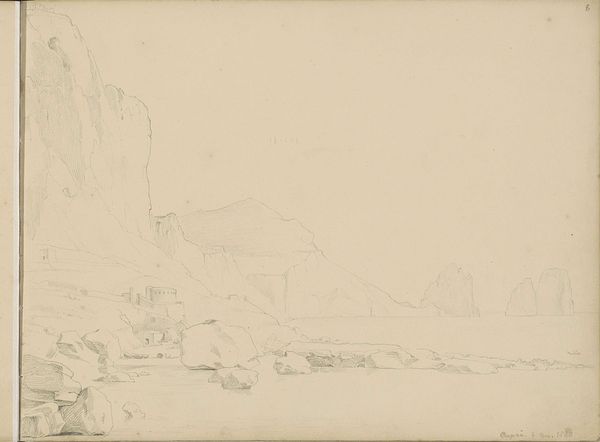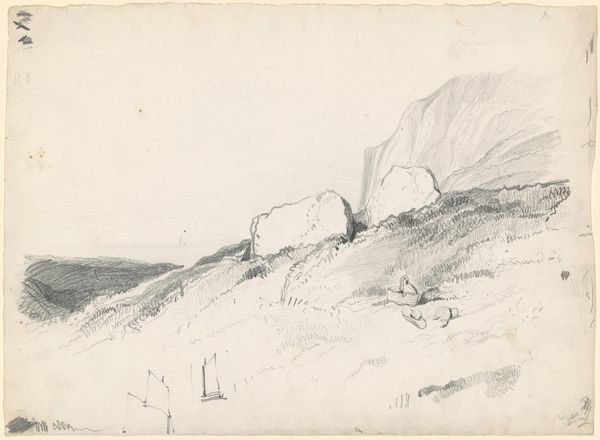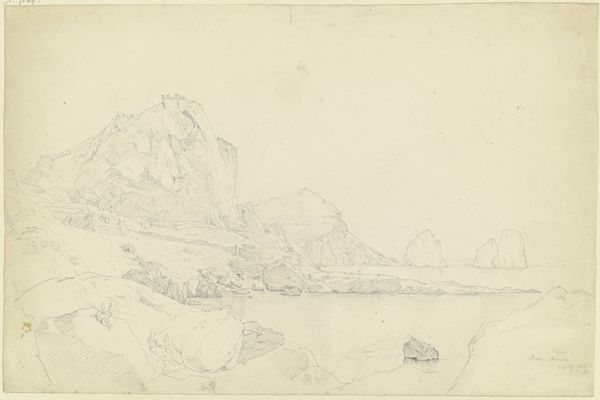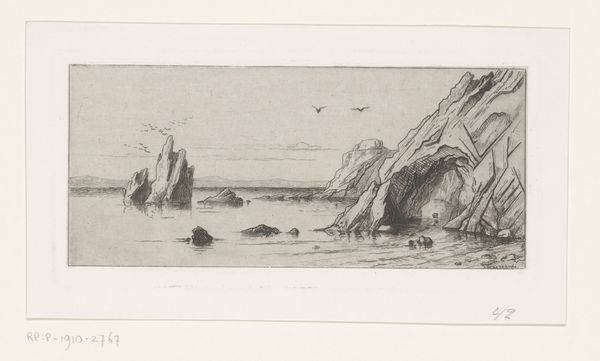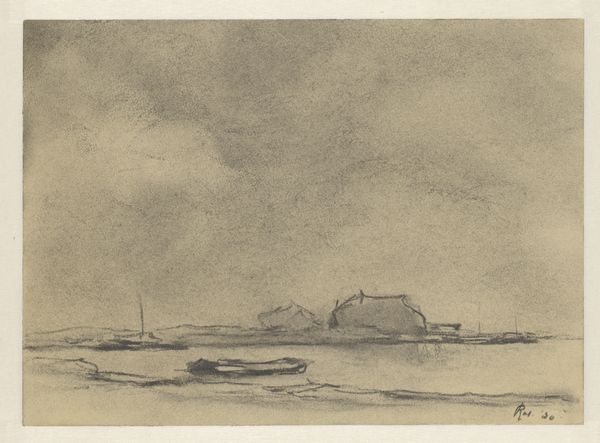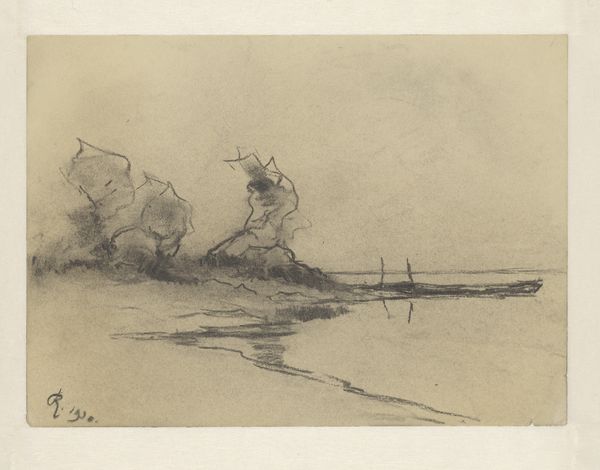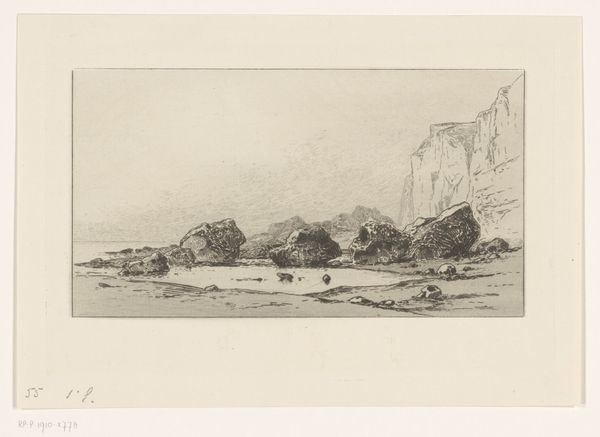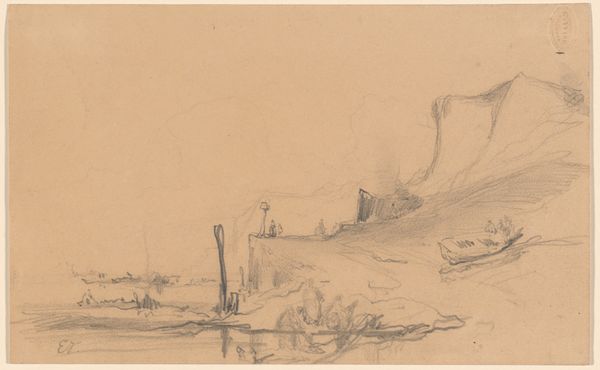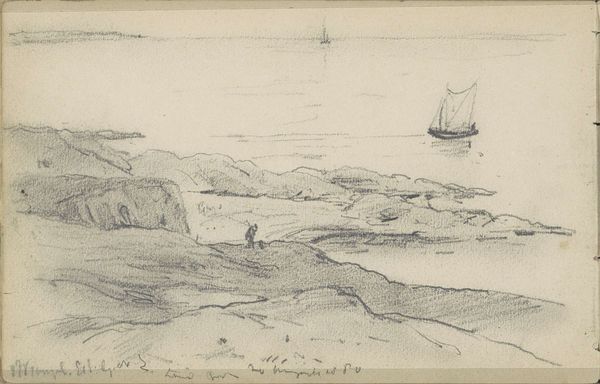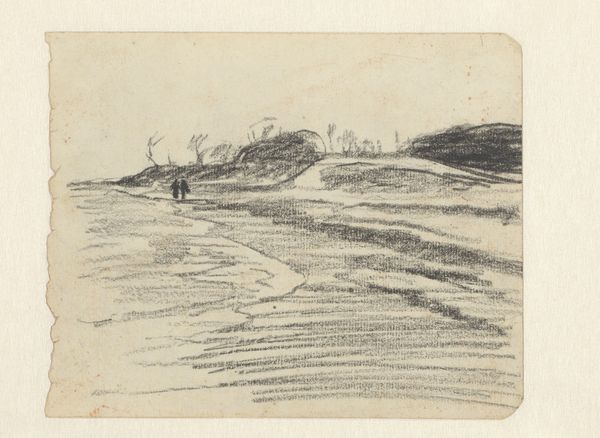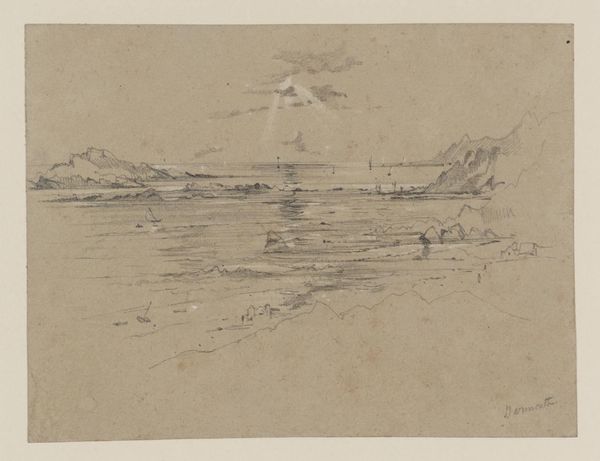
drawing, pencil
#
drawing
#
pencil sketch
#
landscape
#
romanticism
#
pencil
#
sketchbook drawing
#
realism
Dimensions: height 131 mm, width 217 mm
Copyright: Rijks Museum: Open Domain
Editor: This is "Rocky Seacoast" by Andreas Schelfhout, dating from 1797 to 1870. It's a pencil drawing, and it strikes me as very serene, almost melancholy. The muted tones add to that feeling. What do you see in this piece? Curator: What intrigues me is how Schelfhout utilizes readily available materials like pencil and paper to depict the raw power of the coastline. This challenges the hierarchy often found in art of the time. Instead of oil paints and canvas reserved for ‘high’ art, he employs a humble sketch, elevating it to something worthy of display in a museum. The availability and portability of these materials also suggests a democratization of art-making. Do you think that’s fair? Editor: That's interesting – I hadn't thought about it in terms of access. So, by using a pencil, he's not just creating an image, he's also subtly commenting on who gets to make art, or perhaps where art can be made. Curator: Exactly! Furthermore, the "sketchbook drawing" tag indicates a rapid capturing of a moment, a directness in his interaction with the landscape, prior or later becoming art as such, shifting the emphasis from finished product to the artistic process itself and challenging the romantic ideal of a finished masterpiece. The medium itself suggests immediacy and unmediated experience. Editor: So, the choice of materials and the sketchy style become as important as the subject matter itself. It speaks to a kind of...artistic labor. Curator: Precisely. Consider the societal context: increased industrialization even at this time likely pushed artists like Schelfhout to romanticize rural and maritime locations. Thinkers started thinking about the tension between natural resources and capitalist economies. The ready supply of cheap paper made mass visual art conceivable, if not quite yet realised. Editor: I’m starting to see how a simple pencil drawing can be a statement about artistic practice, social structures and even production! I'll never look at sketches the same way again. Curator: It’s about understanding how artists make strategic decisions about materials to impact both artistic merit and even, eventually, their audience. It all contributes to art-historical narrative.
Comments
No comments
Be the first to comment and join the conversation on the ultimate creative platform.
